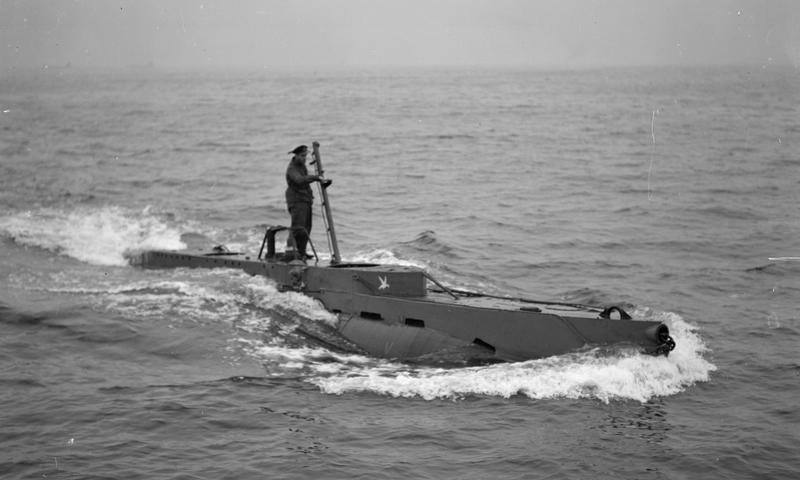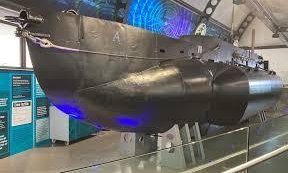X Class
X Craft

Image provided by Imperial War Museum
An X-Craft in Scottish waters
X Craft were developed by the Royal Navy for clandestine raids on enemy ships and installations. While Australia did not acquire X craft, some 10% of the people who volunteered for this “hazardous duty” (as it was then promoted by the Admiralty) and who subsequently operated the vessels were Australians.

Image provided by Royal Navy Submarine Museum
HMS X24 – on display at the Roya Navy Submarine Museum, Gosport
The “mighty midgets” – X and XE Class submarines -- were small but punched way above their weight in terms of impact. From the D-Day landings, to daring missions destroying enemy communications, the 20 X and 12 XE boats achieved prodigious results during their years of service (1943-1945); including with the involvement of heroic Australian submariners.
Less than 6 metres in length, the X Class were powered by a 4-cylinder diesel motor converted from a type used in London buses, as well as a small electric motor, which produced a maximum surface speed of just 6.5 knots (12.0 km/h) and only about one third of that when submerged.
The X Class had to be towed by a full-sized “mother” submarine close to its intended target where the mini subs “towing crew” handed over to the “attacking crew”. Its crew comprised (generally) 4 people – commander, pilot, engineer and specialist diver – undertook a hazardous transfer to the X-Craft by dinghy. Once the attack was over, the process had to be repeated in reverse, and the X-Craft towed home. Tragically, several X Craft (and their crew) were lost while being towed.
A notable early success was 1943's Operation Source, a series of attacks to neutralise the heavy German warships Tirpitz, Scharnhorst and Lutzow, based in Norway. Six X Class submarines, each armed with two large mines, succeeded in keeping Tirpitz out of action for more than six months. Four Australians took part in Operation Source – Lieutenants Henty-Creer, Hudspeth, McFarlane and Shean.
In January and June 1944, the similarly sized replacement XE Class mini submarines would play a key role in preparation for and during Operation Overlord; initially surveying the beaches and then providing vital navigation beacons for the Allies during the D-Day landings in Normandy. These activities were led by Lieutenant Hudspeth.
In July 1945, XE Class were the strike weapons for Operations Sabre and Foil.
The combined aim of the operations was to cut undersea telephone cables linking Singapore, Saigon, Hong Kong and Tokyo, forcing the Japanese to use radio communication, leaving their messages open to interception.
Operation Sabre proceeded according to plan and XE4 commanded by Lieutenant Shean successfully severed the strategic Singapore to Saigon and the Saigon to Hong Kong telephone cable at the entrance to the Mekong River. One of XE4’s divers was Sub Lieutenant Briggs, also an Australian.